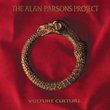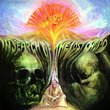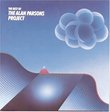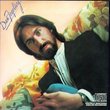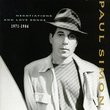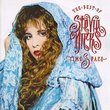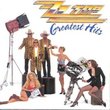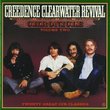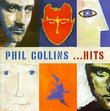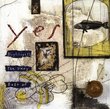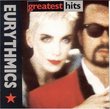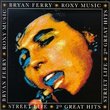| All Artists: Alan Parsons Project Title: Best of 2 Members Wishing: 1 Total Copies: 0 Label: Arista Release Date: 10/25/1990 Genres: Pop, Rock, Classic Rock Styles: Soft Rock, Progressive, Progressive Rock, Album-Oriented Rock (AOR) Number of Discs: 1 SwapaCD Credits: 1 UPC: 078221848626 |
Search - Alan Parsons Project :: Best of 2
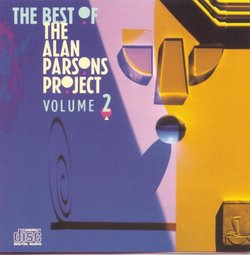 | Alan Parsons Project Best of 2 Genres: Pop, Rock, Classic Rock
|
Larger Image |
CD DetailsSimilar CDs
Similarly Requested CDs
|
CD Reviews"As long as I see no wrong I won't need to testify" mwreview | Northern California, USA | 03/12/2004 (4 out of 5 stars) "Since this CD is volume 2 of the Best of... compilations, the big guns ("Eye in the Sky," "Time," "Games People Play") were already used on the first volume. There are still some excellent tracks here and some of the best tracks off the earlier albums that volume 1 missed. Vulture Culture, Steretomy, and Gaudi are later albums represented on this volume. The singles off Ammonia Avenue are here ("Prime Time" and "Don't Answer Me"). Unfortunately, "Prime Time" is slashed from a 5-minute track to less than 4. It just fades out without the cool, guitar-driven ending. Fan favorite "Days Are Numbers" (by far the best off Vulture Culture) is here and three glaring omissions from the 1983 released volume 1 are included: the instrumental "I Robot," "What Goes Up..." and "The Turn of a Friendly Card (Part III)," the latter definitely in my top 10 APP. It is hard for me to complain about the hefty representation of Ammonia Avenue on these two volumes (one on volume 1 and three tracks here) because it is my favorite APP album. Only one track off of the brilliant Gaudi (Eric Woolfson's last with the band not including Freudiana and what many fans consider the last great APP album), however, is puzzling. "Standing on Higher Ground" is actually one of the weaker tracks on the album, most of which are amazing. Time constraints may have been one of the reasons, as most of the songs on Gaudi are over 5 minutes, and the stellar tracks are between 6-8 minutes. The Eye in the Sky logo is included on the cover artwork but, curiously, it is not represented. Those new to APP will probably find volume 1 more attractive because it has the more recognizable hits, but volume 2 has plenty to offer too, so don't pass it up unless you want to just go out and buy all their studio albums (an even better choice!). This CD includes song lyrics and liner notes but no photos." More Pop, Ever More Alan Parsons Project Pop Lonnie E. Holder | Columbus, Indiana, United States | 09/13/2005 (4 out of 5 stars) "As the 80s moved onward, the Alan Parsons Project did not, choosing instead to become a pop group rather than continue to be the experimental progressive group they once were. However, their descent into commercialism did not maintain their success, and the group's popularity among the masses waned in the latter half of the 1980s. With one or two exceptions, this collection is nearly all pop or mainstream rock rather than experimental or progressive. I prefer the Alan Parsons Project original albums, especially their early albums, and thus I prefer the first greatest hits over this collection, but pop fans will surely prefer this collection over the first collection.
The majority of this collection is from five 80s albums, with two tracks representing two 70s albums. Seven of the eleven songs charted. While this collection represents much of what was commercial about the Alan Parsons Project, the inclusion of four non-charting tracks allows some measure of validity to the claim "best of." The #9 charting 1977 album "I, Robot" provides the vibrant instrumental by the same name. This layered track is filled with all sorts of electronic instrumentation and a beat that, like photons, seems to extend into infinity in both directions. Unfortunately for us this track is all too short. I strongly recommend purchasing the original album, particularly if you are a fan of 70s progressive rock. The 1978 album "Pyramid," which charted at #26, yielded a minor hit with the #87 charting "What Goes Up..." This song reminds me vaguely of some of the music from "Jeff Wayne's War of the Worlds." The beat is generally ponderous with sparkling moments that provide the interest in this song that is very different from the 80s songs in this collection. The last song on this album is the poignant "The Turn of a Friendly Card Part II" from the #13 charting 1980 album "The Turn of a Friendly Card." I enjoy this song with its mellow ending that is a fitting coda to this collection. While the collection is balanced to the pop side, when I hear this song and Chris Rainbow's excellent vocals I hear the progressive group of the 70s and remember my interest in that kind of music, and wonder how rock instead turned to bland pudding in the 80s. There are three songs from the #15 charting 1984 album "Ammonia Avenue." "Prime Time" is very similar to the style of 1982's "Eye in the Sky," but only charted at #34. "Don't Answer Me" became the group's last top 20 song, reaching #15. The song is very catchy and very middle-of-the-road, and appears to owe a lot to the Beach Boys with the lovely harmonies. Even with the pop surroundings the group managed to recall their roots with the song "Ammonia Avenue." Eric Woolfson's plaintive vocals are but one of the highlights of this highly orchestrated song. The bridge in this song, which combines the spirit of early Alan Parsons Project with a horn section reminiscent of early Chicago, is one of the most enjoyable moments of this song. I enjoy "Don't Answer Me," but the real winner from this album is "Ammonia Avenue." In 1985 the Alan Parsons Project released the #46 charting album "Vulture Culture." Though the album was commercially weaker than their previous albums, the music was relatively consistent. The song "Let's Talk About Me" reached #56 on the Billboard chart and #10 on the Mainstream Rock chart. The song "Days Are Numbers (The Traveller)" reached #71 on the Billboard chart and #30 on the Mainstream Rock chart. Both songs are good, if somewhat mundane and less than inspired, particularly in comparison to the music of the Alan Parsons Project's earlier years. In 1986 the #43 charting album "Stereotomy" was released, represented by the songs "Limelight" and the #82 charting (#5 on the Mainstream Rock chart!) "Stereotomy." The song "Limelight" is nicely done. There are a variety of elements that I find interesting. The song still has a strong pop flavor, and I find a strong stylistic connection to Chicago's 70s music, but considering how much I enjoyed Chicago's music from that era perhaps the connection is a good thing. "Stereotomy," on the other hand, sounds like 80s rock. There is nothing wrong with the song, but it seems to follow trends too much rather than setting one. The last album represented is 1987's #57 album "Gaudi." I appreciate the goal of the album, which was to musically depict the feelings inspired by architect Antonio Gaudi's works. The song "Standing on Higher Ground," which hit #3 on the Mainstream Rock chart, is a nicely constructed pop song. There are interesting instrumental infusions in this song that make this song enjoyable to hear, and though I am less appreciative of the Alan Parsons Project's pop music, this one is one of the better ones. There is a big difference between this album and the first Alan Parsons Project "Best of." There is even less orchestral rock and fewer progressive influences. The entries that fall in this category seem to be there just to show the progressive and experimental flag, rather than giving any significant disc time to either. While I like this CD, it is not one of my favorite Alan Parsons Project CDs. Rather, I prefer the earliest albums by this group, and their first "best of" collection, both of which focus on the group that reveled in being different. However, pop fans who have heard the hits from this CD and enjoy them should like this CD. " |

 Track Listings (11) - Disc #1
Track Listings (11) - Disc #1